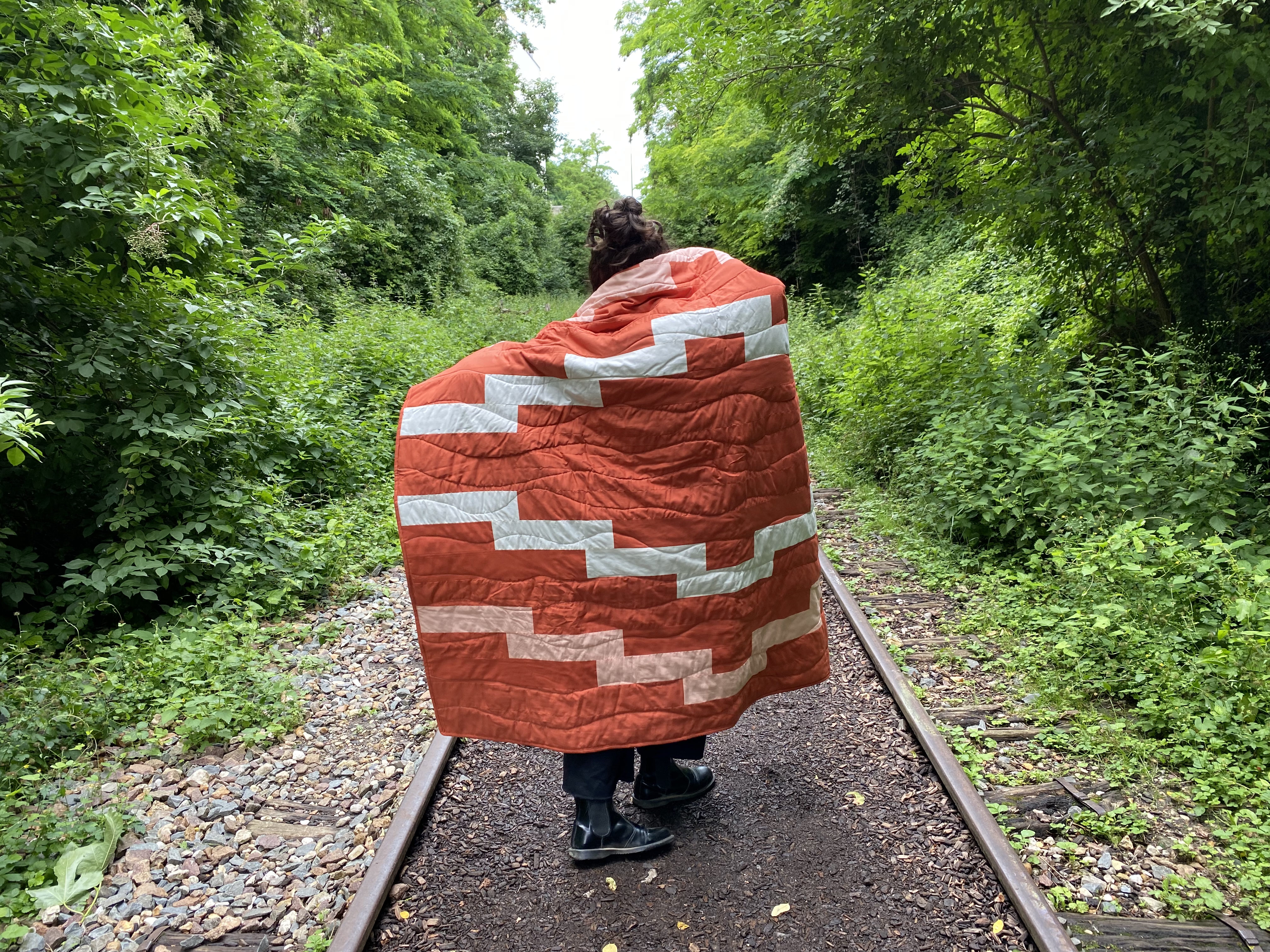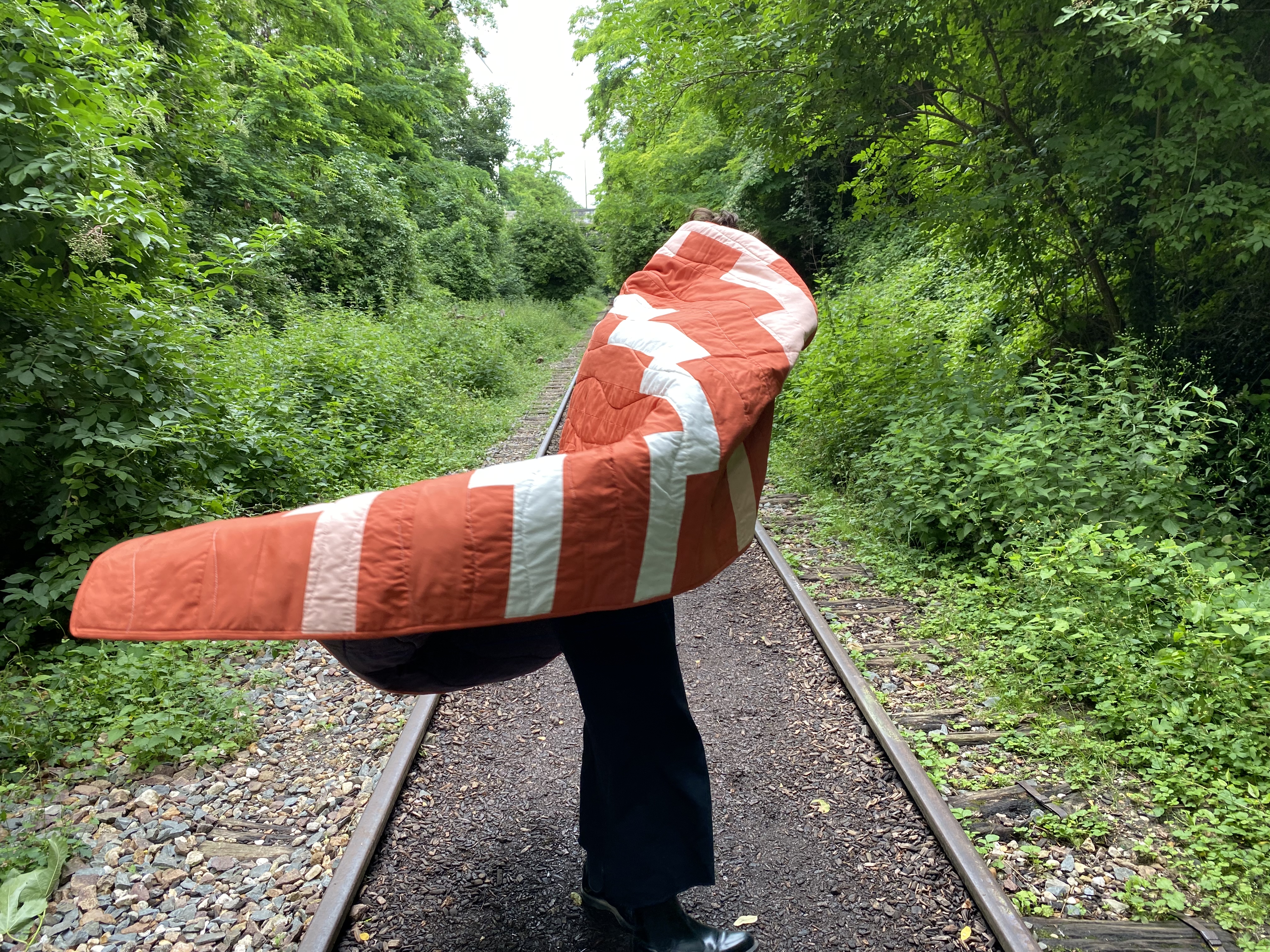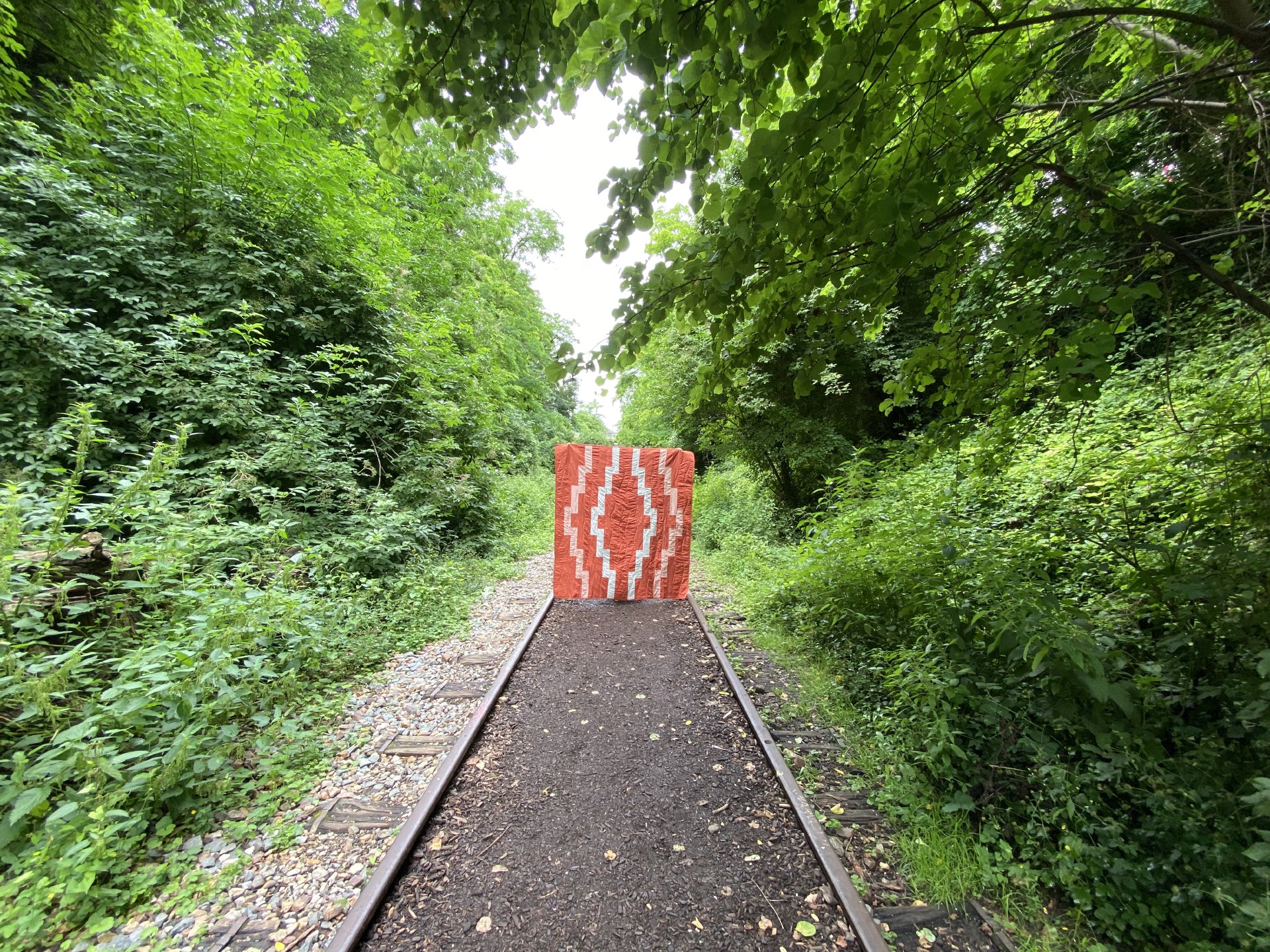For once on this blog, we are going to talk about a home project ! I discovered quilting not long ago. In my head, quilting was kind of old-fashioned. Quilts were the kind of items you would find in an old family house, dusty, stained and made with weird scraps of flowery fabrics and bedsheets… But I discovered that there was really something else to it, and you could whip up some gorgeous, modern quilts! With really strong graphic vibes, and that’s what I went for!
The Antelope quilt, from Vacilando Quilting
It all began a few years ago, when I discovered Vacilando Studio’s account. I literally fell in love of her beautiful, graphic quilt designs, widely inspired by her trips and american landscapes.
No print fabrics, only simple shapes, strong contrasts and saturated colors, for really modern designs. And I was soooo happy when I found out she wrote a book where you could find the instructions to get started on quilting and to sew some of her designs. So, to no one’s surprise, I bought the book.
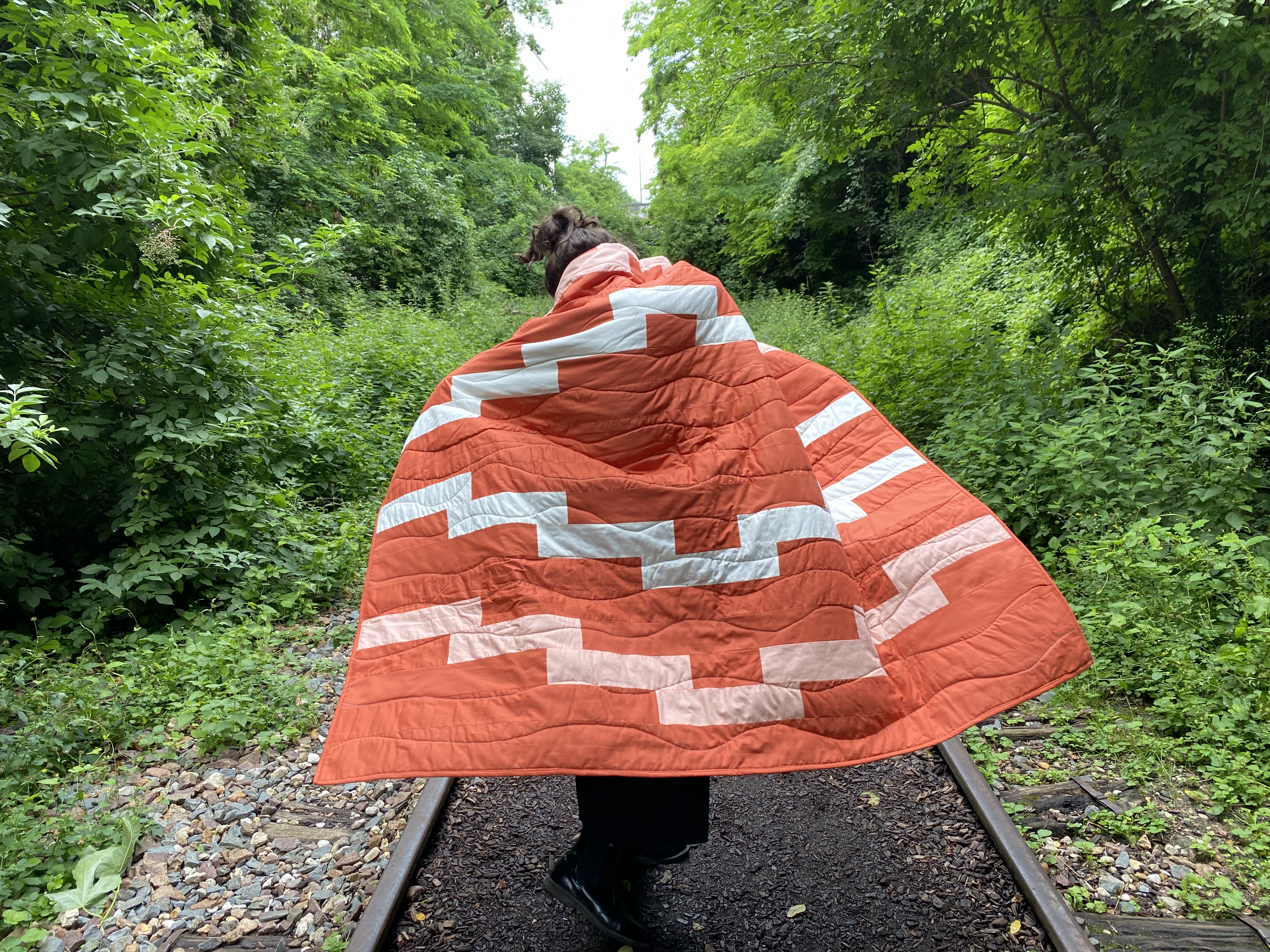
You have to know that I had no experience whatsoever in quilting at that time. The book is really well written: everything is explained as to which tools you need, different techniques, the different steps of making a quilt, hand sewing vs machine sewing techniques and finishes, which batting to use, and so on. I mean, I only ever quilted things according to the instructions in the book, so I got no comparative point of view to offer, but what I can say is that all of these quilted items ended up being major successes \o/ What I also like about the book is that the projects are sorted by difficulty: first the patterns with rectangles and squares only, then the ones with triangles and then the ones with circles and half circles. So you can work your way up when you’re a beginner like me.
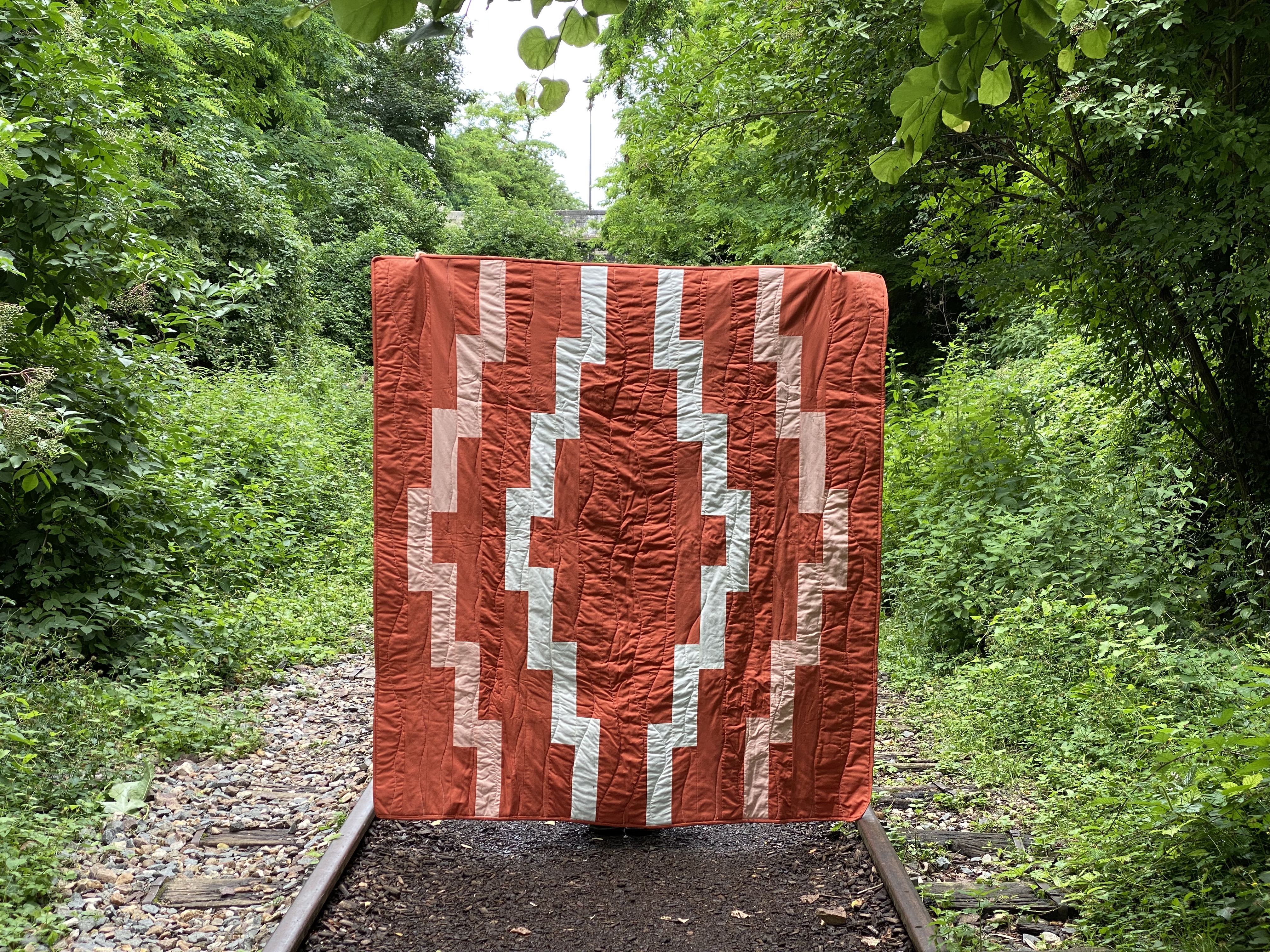
Before sewing the Antelope quilt, I tried my hand at smaller projects in the book: a pillow cover and a crib quilt, both of which were really nice to make for a really good FO. But weirdly, I found that the Antelope quilt was the easiest to make, mainly because it’s only made of rectangles, so no curve seams. The only difficulty was the size (and deciding to sew a quilt when it’s 35°C… baaaad idea), cause it’s kind of an impressive beast: a square of more than 1.60mx1.60m.
In terms of piecing, it’s rather straight forward cause the book provides you with the cutting plan. For this quilt you basically cut long strips of fabric that you then cut into rectangles (all dimensions are carefully listed in a recap table). After that the sewing of the quilt top is just a piece of cake. The only thing I noticed is that one of the rectangle for the outside strip is a bit to small, so I fixed it by adding a small square of fabric. It’s quite small and discreet, as it’s on the outside of the motif, so it doesn’t really bother me. You also need to cut smaller strips of fabric to make the final binding, but everything is explained.
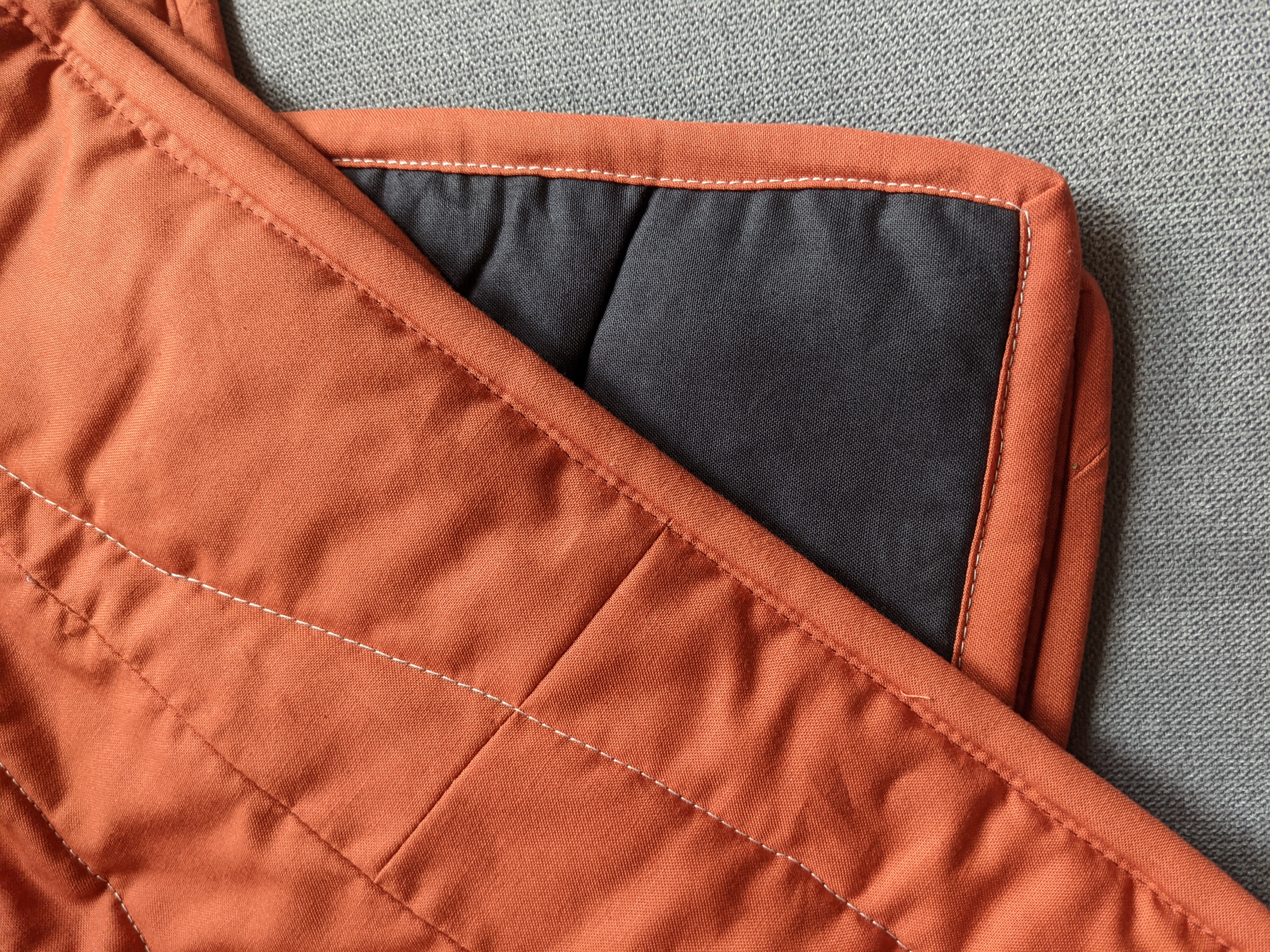
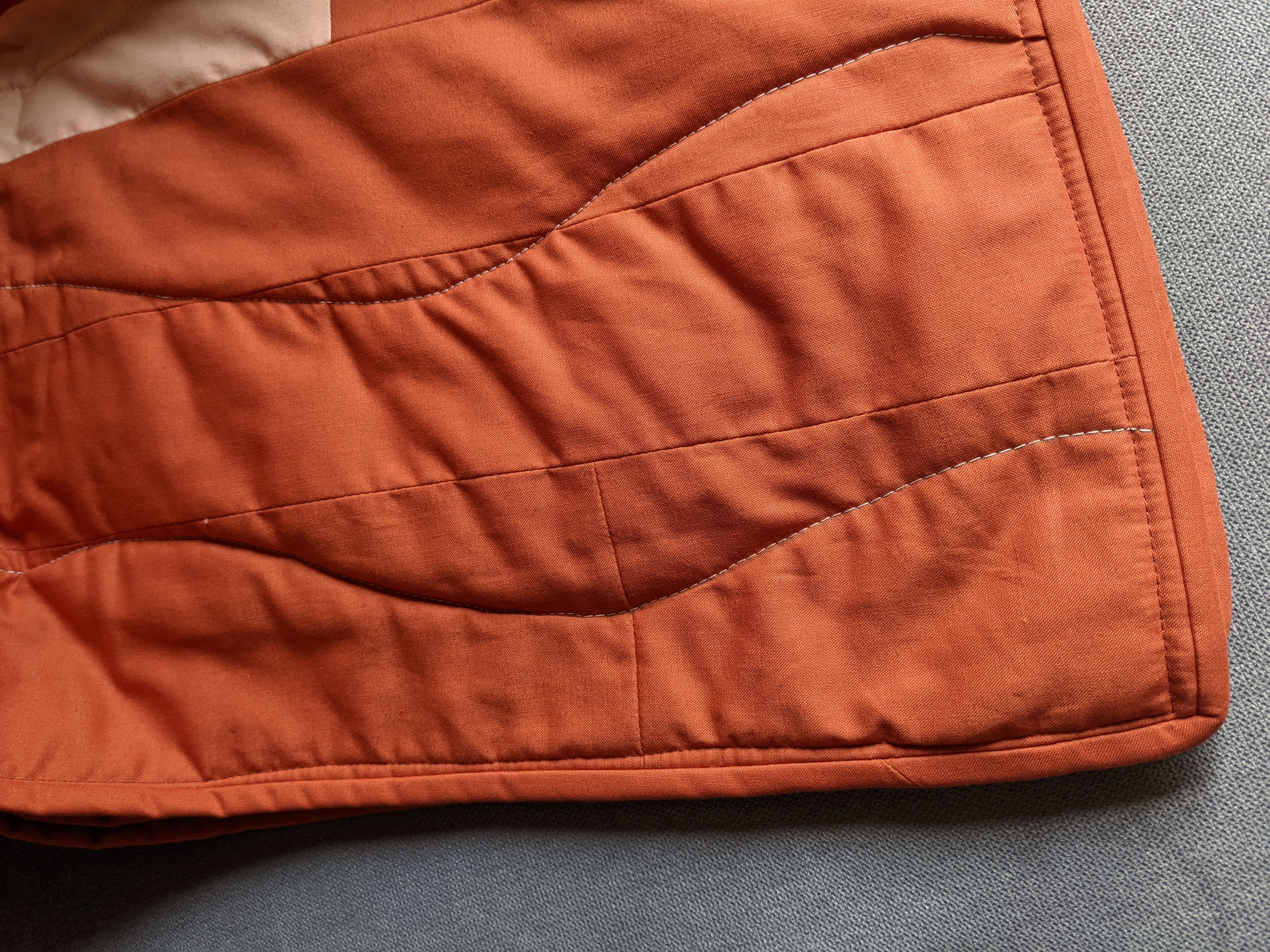
My version
I did no modification, I carefully followed the instructions. The book explains how you can size up or a down a design, I think it can be useful if you want to make a quilt with specific dimensions.
I assembled all the different pieces with my sewing machine: the piecing, the quilting and the binding. No hand sewing for this quilt. I used my walking foot for quilting the blanket, and it handled the 3 layers of fabric nicely, without shifting.
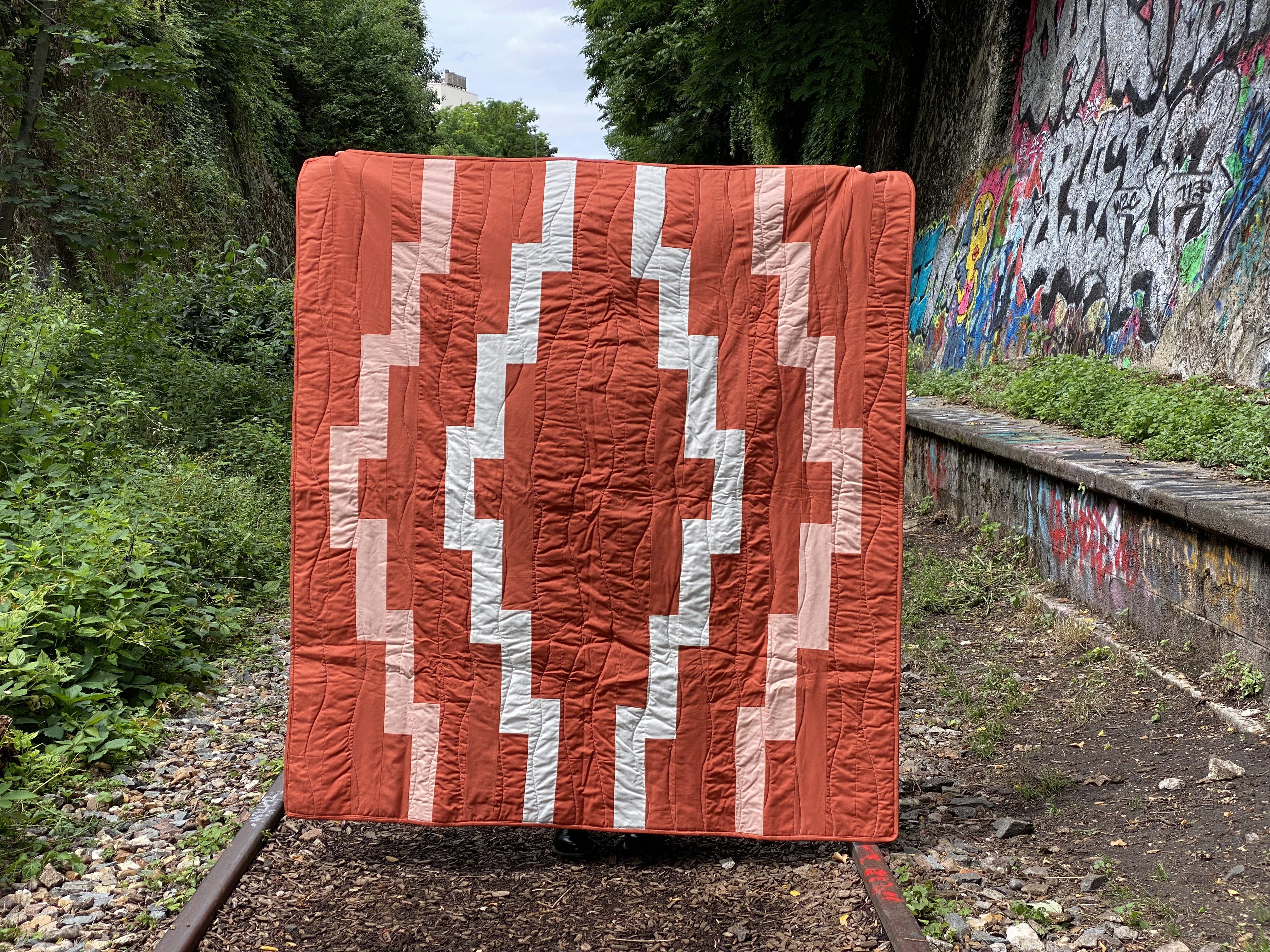
The wavy quilting is the suggestion of the book, and I decided to replicate this as I liked the contrast with the straight lines of the design. I tried eyeballing it for the first line, but I felt it wouldn’t be comfortable for the remaining lines… So I drew them with an erasable pen, and then sewed over the lines.
The fabrics
For this quilt, I used the Kona Cotton from Kaufman fabrics (the one suggested in the book), bought on the French eshop Le Fil d’Emma. It’s a bit pricey, but it’s really good quality: it’s really soft, almost silky and the colors are saturated and vibrant. I used these colors:
- Charcoal for the backing,
- Terracotta for the main fabric and the binding,
- Peach for the outside lines of the motif,
- Bone for the inside lines of the motif.
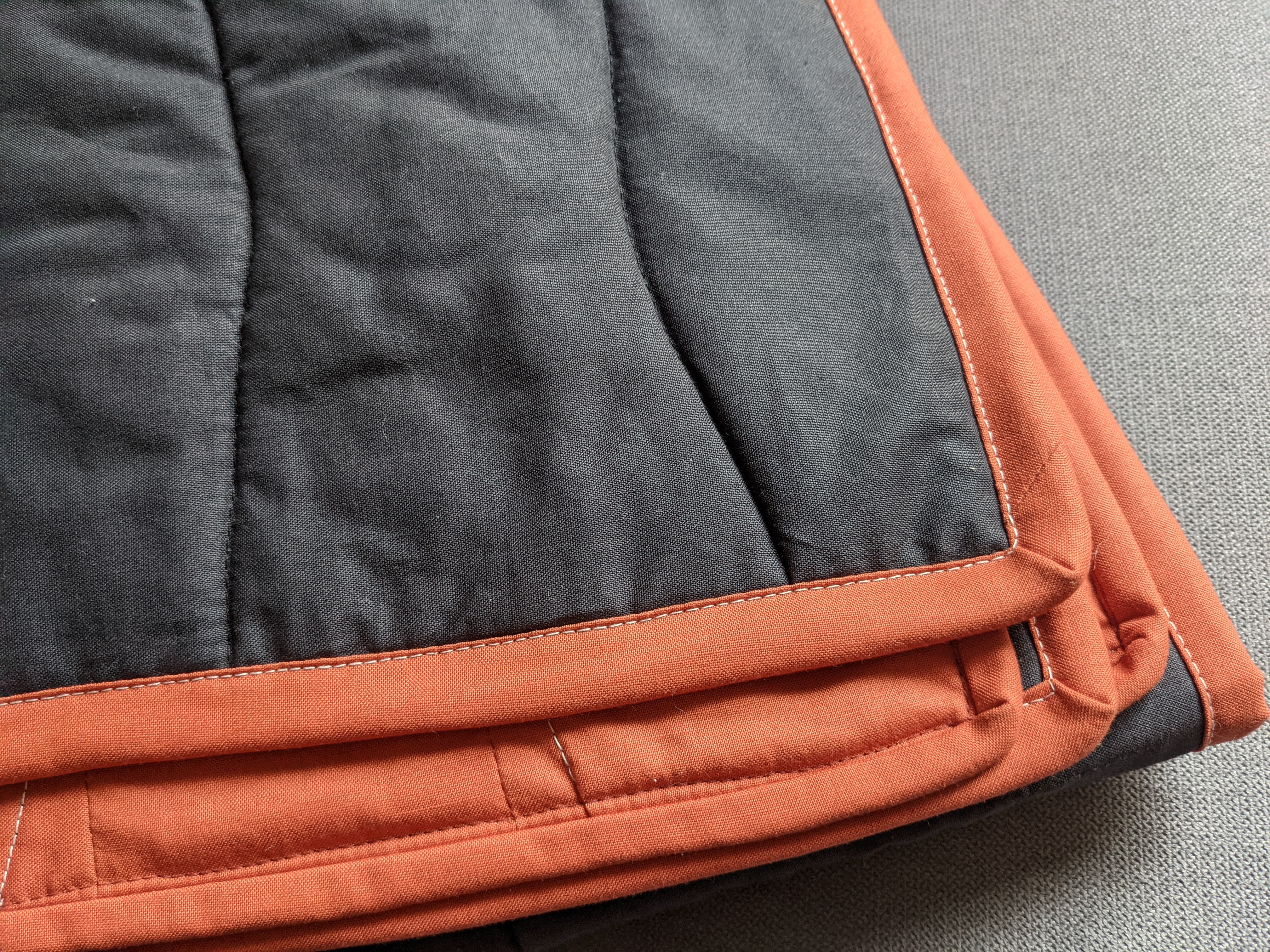
As to the batting, I used a (gigantic) scrap of batting that I bought a while ago to quilt a coat’s lining. I actually made a mistake when ordering this batting. I didn’t see that the batting was really wide (2 meters wide to be precise) and on top of that I ordered too much…
Verdict
This quilt was a birthday gift for my mom, and I have to say that I’m rally happy with the final result. It’s impressive, although it was relatively easy to make. And I think it has a modern and graphic feel to it that I love. I have to say that there is a number of designs in the book that I like, it’s not impossible that at some point I’ll do one for me…
